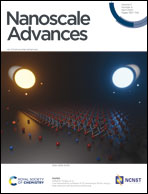Electronic structure engineering and biomedical applications of low energy-excited persistent luminescence nanoparticles
Abstract
Persistent luminescence nanoparticles (PLNPs) are new luminescent materials that can store the excitation energy quickly and persistently emit it after ceasing excitation sources. Due to the advantages of long-lasting luminescence without constant excitation, PLNPs have been widely used in biomedical applications. Visible light excitable PLNPs (VPLNPs) and near-infrared excitable PLNPs (NPLNPs) are two kinds of novel and promising PLNPs. Compared to conventional PLNPs, VPLNPs and NPLNPs have the characteristics of low tissue damage, deep tissue penetration, and high signal-to-noise ratio. With these special features, they have great potential in applications such as long-term tracing, deep-tissue bioimaging, and precise treatment. In this review, we introduce the common strategy of constructing VPLNPs and NPLNPs based on electronic structure engineering and the applications of VPLNPs and NPLNPs in biomedicine. This review article aims to offer valuable information about the progress and development direction of VPLNPs and NPLNPs, promoting more applications in biomedicine, materials science, energy engineering, and environmental technologies in the future.

- This article is part of the themed collection: Recent Review Articles


 Please wait while we load your content...
Please wait while we load your content...